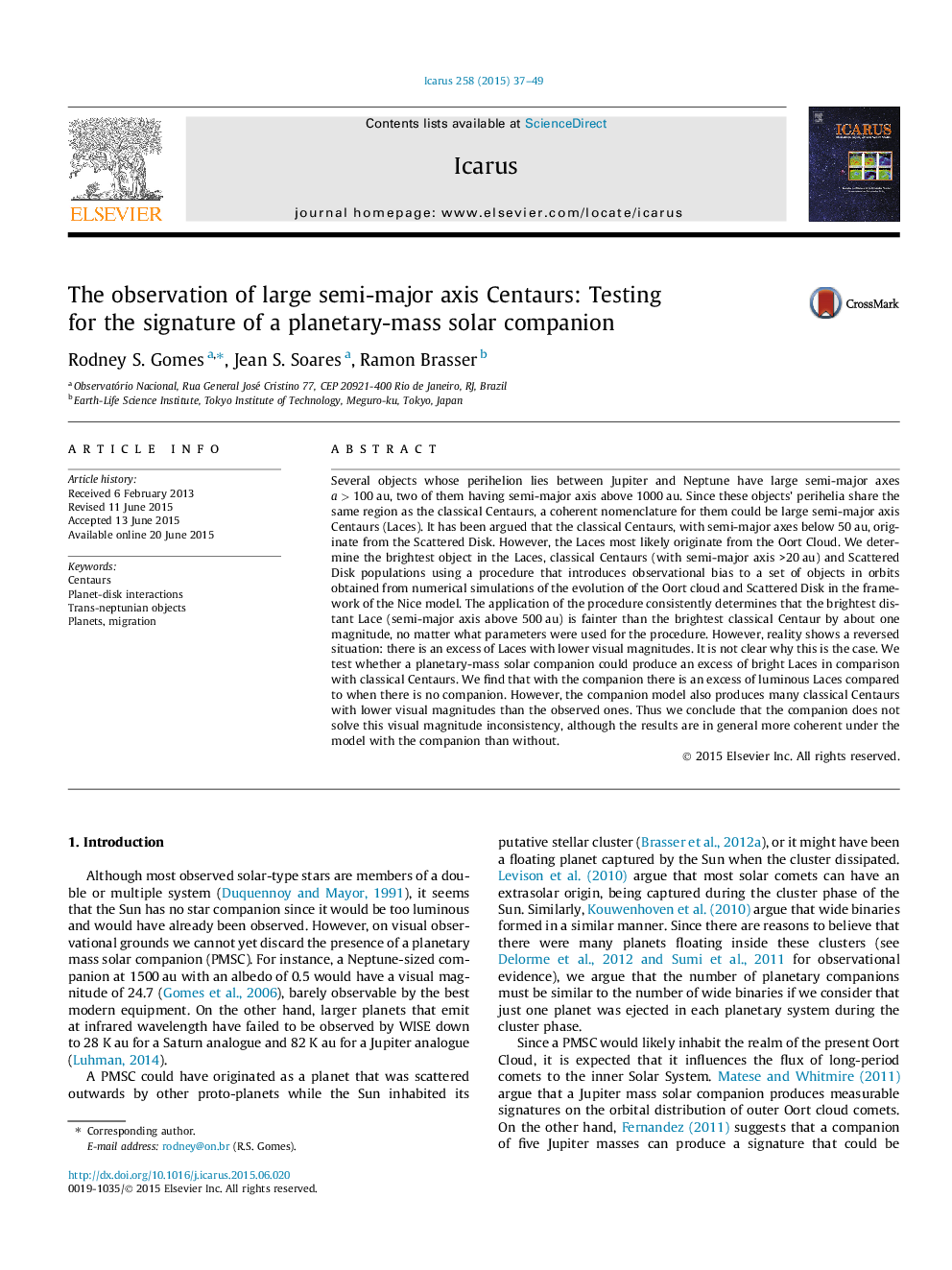| کد مقاله | کد نشریه | سال انتشار | مقاله انگلیسی | نسخه تمام متن |
|---|---|---|---|---|
| 1772998 | 1523532 | 2015 | 13 صفحه PDF | دانلود رایگان |
• We find that a putative planetary mass solar companion can produce an excess of large semi-major Centaurs.
• We test whether this feature is compatible with the observed Centaurs.
• We find that a solar companion also produces an excess of classical Centaurs.
• We conclude that models show distant Centaurs too bright compared to classical ones.
Several objects whose perihelion lies between Jupiter and Neptune have large semi-major axes a>100a>100 au, two of them having semi-major axis above 1000 au. Since these objects’ perihelia share the same region as the classical Centaurs, a coherent nomenclature for them could be large semi-major axis Centaurs (Laces). It has been argued that the classical Centaurs, with semi-major axes below 50 au, originate from the Scattered Disk. However, the Laces most likely originate from the Oort Cloud. We determine the brightest object in the Laces, classical Centaurs (with semi-major axis >20 au) and Scattered Disk populations using a procedure that introduces observational bias to a set of objects in orbits obtained from numerical simulations of the evolution of the Oort cloud and Scattered Disk in the framework of the Nice model. The application of the procedure consistently determines that the brightest distant Lace (semi-major axis above 500 au) is fainter than the brightest classical Centaur by about one magnitude, no matter what parameters were used for the procedure. However, reality shows a reversed situation: there is an excess of Laces with lower visual magnitudes. It is not clear why this is the case. We test whether a planetary-mass solar companion could produce an excess of bright Laces in comparison with classical Centaurs. We find that with the companion there is an excess of luminous Laces compared to when there is no companion. However, the companion model also produces many classical Centaurs with lower visual magnitudes than the observed ones. Thus we conclude that the companion does not solve this visual magnitude inconsistency, although the results are in general more coherent under the model with the companion than without.
Journal: Icarus - Volume 258, 15 September 2015, Pages 37–49
